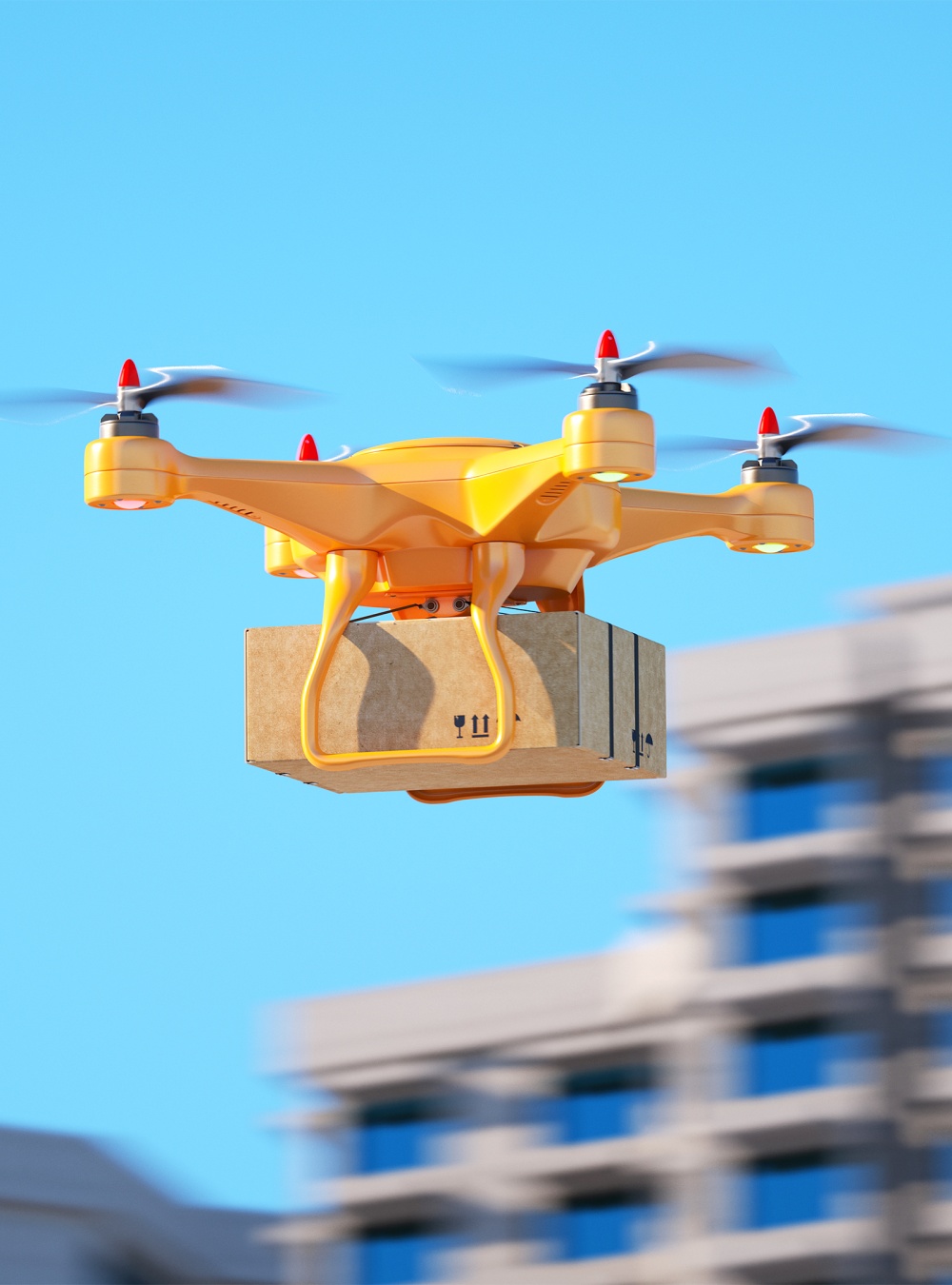What will enable millions of uncrewed vehicles to safely fly in the nation's airspace—delivering packages, supporting first responders, and even carrying passengers? A MITRE-led government-industry collaboration is outlining the path forward.

Aircraft-to-Everything: The Solution for Safely Expanding Uncrewed Vehicle Operations
More than 782,000 drones are registered to fly in U.S. airspace today. That's twice the number of piloted aircraft. Yet we've only begun to scratch the surface of the benefits uncrewed aircraft systems (UAS) can offer.
What if drones were the primary delivery mechanism for the 20 million packages American consumers receive every day? What if all 18,000 of our law enforcement agencies used drones for crime scene monitoring? And what if automated air taxis—or advanced air mobility (AAM) vehicles—replaced earth-bound vehicles as the main way to transport passengers across town?
These are all scenarios in the envisioned future for UAS and AAM. But before any of that can happen, before these vehicles can be flown at greater scale, we need to ensure they're safe.
A2X Concept Fosters Broad Collaboration
Both government and industry agree that the way to achieve this not-so-distant future is by finding a way for uncrewed vehicles to communicate directly with one another—and with ground-based entities—about where they're flying, the low-lying obstacles and weather in the area, and more. The system would work without full dependence on GPS or cell towers, and it would enable safe operations even when the command-and-control link between the remote operator and the vehicle is broken.
We need a device-to-device communications link to ensure safety and resiliency.
It's called aircraft-to-everything—or A2X—and a MITRE-led government-industry collaboration is laying the groundwork to realize it.
"Everyone—from UAS operators to Congress—recognizes that dependence on a ground-based infrastructure to coordinate communications is unworkable for the volume and type of activity envisioned for UAS and AAM," says Greg Orrell, who is leading the government-industry collaboration on A2X. "We need a device-to-device communications link to ensure safety and resiliency."
MITRE Convenes Industry to Advance Concept Development
Developing such a capability is no small task. The system must work for all the parties involved, it must meet a high safety bar, and it must work throughout the National Airspace System.
To advance that vision, the Federal Aviation Administration (FAA) asked MITRE—operator of its federally funded R&D center—to work with a broad spectrum of industry representatives to define a concept of operations (CONOPS) for an A2X ecosystem.
"We have in-depth knowledge of UAS avionics, applicable regulations, FAA operations, and current use of the radio frequency spectrum," says MITRE software and systems engineer John Mayo. "We also have extensive experience helping government and industry partner on integrated concept development. And we’re objective. The FAA sought our help and leadership on this challenge for these reasons."
MITRE produced results. "We convened 71 industry participants to develop the A2X CONOPS," Orrell says. Some were UAS, AAM, or avionics manufacturers. Others were drone or AAM operators. Still others were standards-development bodies or cellular service operators.
Industry Partners Lay the Foundation for the Future of A2X
"Together, we achieved consensus on what the A2X link should do and the specific use cases it would need to support," Orrell says. "We also made recommendations for government and industry to move the concept into development."
For instance, a big task for industry is to agree upon their information sharing needs for the A2X link, such as the volume of data it must accommodate, for how many users, and over what distances. "Those things have to be defined in order for the government to determine the spectrum allocation that would meet UAS and AAM needs over the long term," Orrell says.
The primary use case the collaborators wanted to be sure was addressed is the ability for A2X link to support detect-and-avoid operations. "That means we need an onboard system that enables the vehicle to sense nearby vehicles and maneuver to avoid them," Orrell explains. "The system also needs to be able to have the information to avoid ground-based obstacles, such as cranes, power lines, and cell towers."
Situational awareness is another identified use case of importance. "Having an understanding of where UAS are operating will enable both safety and efficiency," Orrell says. "For example, if operators can see that there is a high volume of traffic in certain areas, they may plan alternative routes."
Ultimately, commercial enterprises would develop the avionics that would be installed on UAS and AAM to meet these and other needs, as well as any ground systems that would receive transmissions from these vehicles.
"Our work with the FAA and industry will make that possible," Orrell says. "There's more work to be done, but we've laid the groundwork and will continue to flesh out system requirements collaboratively."
Join our community of innovators, learners, knowledge-sharers, and risk takers. View our Job Openings and Student Programs. Subscribe to our MITRE 360 Newsletter.